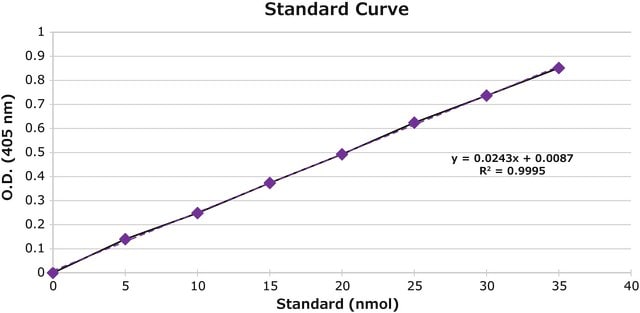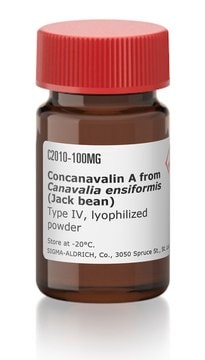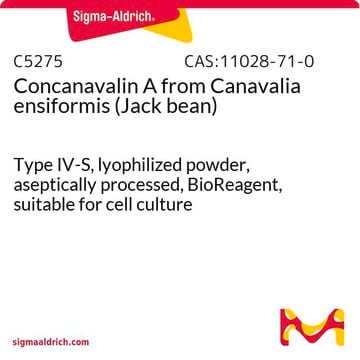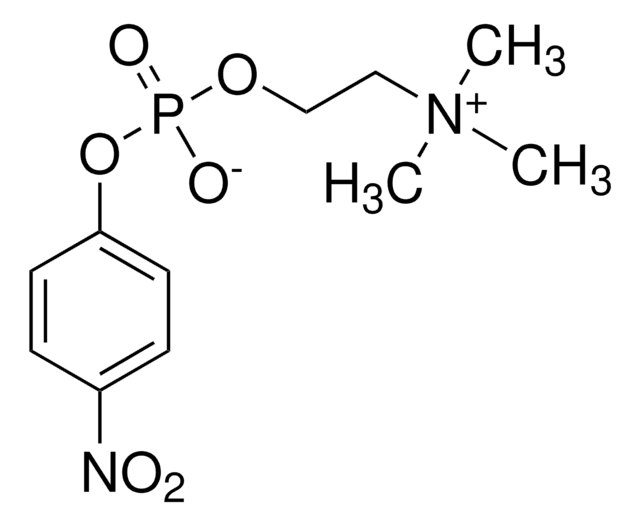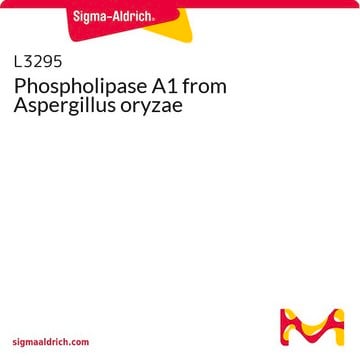P8804
Phospholipase C, Phosphatidylinositol-specific from Bacillus cereus
buffered aqueous glycerol solution, ≥1,000 units/mg protein (Lowry)
Sinonimo/i:
PC-PLC
Scegli un formato
464,00 €
Scegli un formato
About This Item
464,00 €
Prodotti consigliati
Origine biologica
Bacillus sp. (Bacillus cereus)
Livello qualitativo
Stato
buffered aqueous glycerol solution
Attività specifica
≥1,000 units/mg protein (Lowry)
PM
28 kDa
Attività estranea
Phopholipase C (lecithinase) ≤1 units/mg protein
Sphingomyelinase ≤40 units/mg protein
Temperatura di conservazione
2-8°C
Informazioni sul gene
Bacillus cereus E33L ... BCZK3513(3026815)
Cerchi prodotti simili? Visita Guida al confronto tra prodotti
Descrizione generale
Applicazioni
- in the hydrolysis of substrates p-nitrophenylphosphorylcholine (p-NPPC) and p-nitrophenylphosphorylphosphate (p-NPP)[3]
- to cleave glycosylphosphatidylinositol (GPI) anchor of lynx1 protein and its detachment from plasma membrane[4]
- to cleave immunolabeled HeLa cells[5]
Azioni biochim/fisiol
Definizione di unità
Stato fisico
Risultati analitici
Inibitore
Codice della classe di stoccaggio
11 - Combustible Solids
Classe di pericolosità dell'acqua (WGK)
WGK 3
Punto d’infiammabilità (°F)
Not applicable
Punto d’infiammabilità (°C)
Not applicable
Dispositivi di protezione individuale
Eyeshields, Gloves, type N95 (US)
Scegli una delle versioni più recenti:
Certificati d'analisi (COA)
Non trovi la versione di tuo interesse?
Se hai bisogno di una versione specifica, puoi cercare il certificato tramite il numero di lotto.
Possiedi già questo prodotto?
I documenti relativi ai prodotti acquistati recentemente sono disponibili nell’Archivio dei documenti.
I clienti hanno visto anche
Articoli
Glycosylphosphatidylinisotol- (GPI) anchored proteins have been identified throughout a broad range of eukaryotic species ranging from humans to insects, yeasts, bacteria, and fungi, suggesting that they are an ancient modification.
Filtri attivi
Il team dei nostri ricercatori vanta grande esperienza in tutte le aree della ricerca quali Life Science, scienza dei materiali, sintesi chimica, cromatografia, discipline analitiche, ecc..
Contatta l'Assistenza Tecnica.

